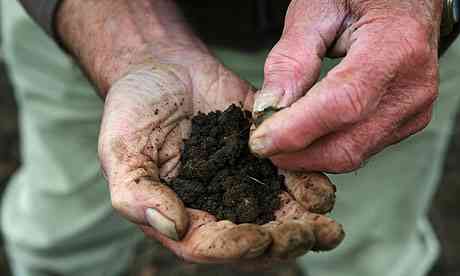
A inhabitant UK dirt consult has found no net CO loss. Photograph: Graham Turner
A vital investigate for the UK supervision has expel disbelief over claims that rising temperatures are causing dirt to siphon larger amounts of CO dioxide in to the atmosphere, serve fuelling tellurian warming.
In 2005 it was reported in the scholarship biography Nature that over the past twenty-five years 100m tonnes of CO dioxide had been expelled by the dirt of England and Wales. The figure cancelled out all emissions cuts in the UK given 1990.
However, a inhabitant consult of the soils of Great Britain, saved by the dialect for sourroundings food and farming affairs, claims to have found no net loss of CO over we estimate the same period.
Scientists have right away due that a special investigate group, with an eccentric statistical expert, should inspect since the reports talk about and that outcome is some-more expected to be correct.
The ultimate questions follow weeks of claims that predictions about the impacts of meridian shift have been farfetched or miscalculated, together with the melting of Himalayan glaciers, and apart allegations of disposition formed on leaked emails from scientists at the meridian investigate section at the University of East Anglia.
The writer of the ultimate report, Professor Bridget Emmett of the UK Centre for Ecology and Hydrology (CEH), warned that anticipating there had been no loss of CO so far should not be taken to meant the deficiency of a threat. In the prolonged term, scientists envision a "tipping point" when the faster wake up of microbes in warmer soils starts to beget some-more CO2 than can be engrossed by plants.
"That"s when you begin losing CO as a whole," pronounced Emmett. "Most of the models contend that will be after this century."
The 2005 inform in Nature was formed on the National Soil Inventory, carried out primarily in in in in between 1978 and 1983, and again from 1994 to 2003, by the National Soil Resources Institute at Cranfield University. That investigate pronounced that from 1978 to 2003 there had been an estimated loss of 4m tonnes of CO a year from the soils of England and Wales, and the researchers estimated that, since of the higher CO calm of Scotland"s peaty soils, the annual loss from the UK as a total was 13m tonnes a year. The actuality that the waste occurred opposite all sorts of land make make use of of referred to a couple to meridian change, pronounced the team.
At that time, one of the investigate team, Professor Guy Kirk of Cranfield University, told a conference: "It had been reckoned that the CO2 fertilisation outcome was offsetting about 25% of the approach human-induced CO dioxide emissions. It was reckoned that the dirt heat glimmer outcome would catch up in may be 10 to 50 years" time. We are display that it seems to be function rather faster than that."
The ultimate inform by the CEH, usually expelled as piece of the ongoing research of the 2007 Countryside Survey of Great Britain, compared studies in in in in between 1978 and 2007. It found CO thoroughness in the tip 15cm of dirt increasing over the initial dual decades, and decreased in in in in between 1998 and 2007. The usually disproportion was cultivatable land, where there was a net loss of carbon, probably since of intrusion by ploughing.
"Overall there was no shift in CO thoroughness ... and [we] cannot endorse the loss reported by the National Soil Inventory," states the report.
Kirk told the Guardian that the Cranfield group were still "confident in the formula [that] there was a net loss of carbon". But he pronounced successive studies had referred to that "at best" 10% of the loss of CO was due to meridian change, and the rest was due to changes in land make make use of of and management, such as acclimatisation of grassland to crops.
Reasons being carefully thought about for the disproportion in formula embody where and how samples were selected and analysed and how the interpretation was compiled.
"The volume of CO in topsoils opposite England and Wales is about 2bn tonnes, so detecting a shift of even 4m tonnes per year is really challenging," pronounced Emmett. "Small differences in methods in in in in between the dual surveys can thus have a large effect."
0 comments:
Post a Comment